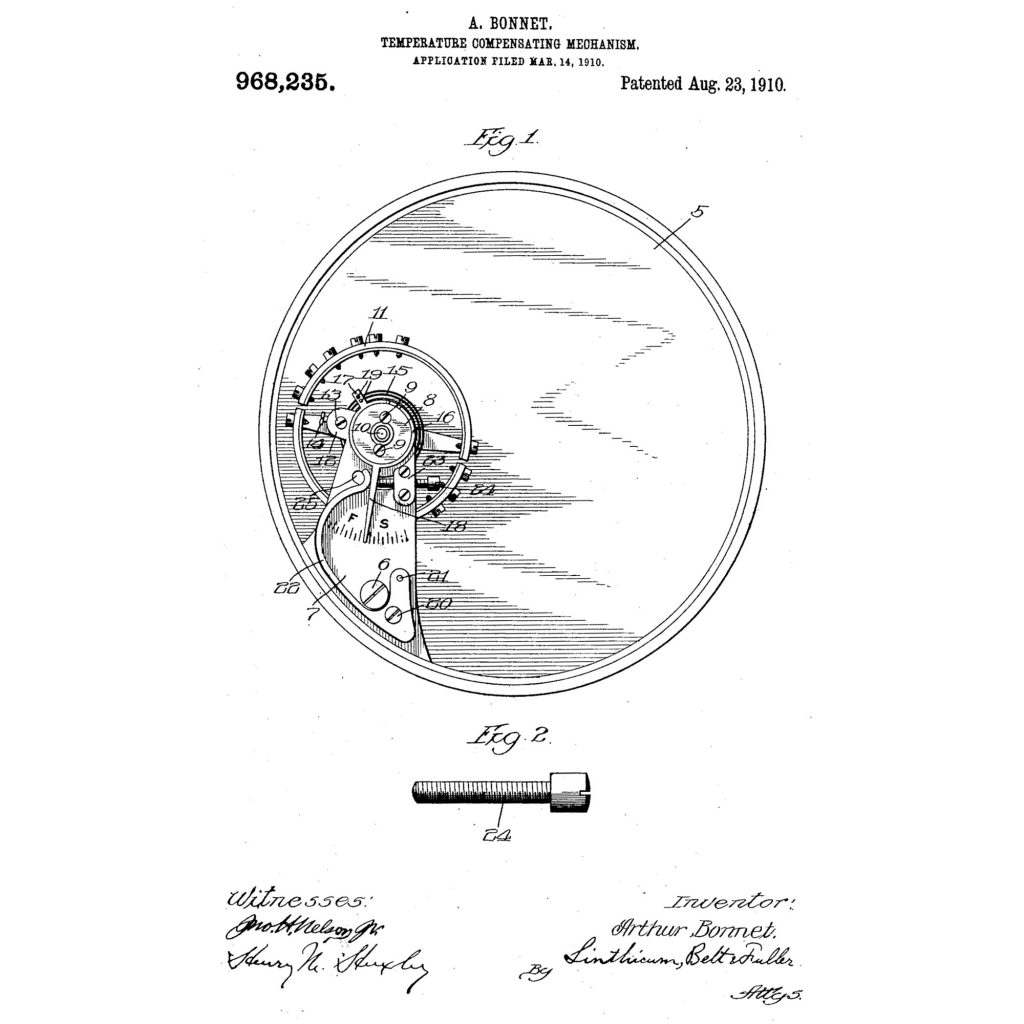Early History of the New York Watch Company: Part 5 – The Refreshed Product Line
The fire that destroyed the New York Watch Company factory in April 1870 occurred at an incredibly pivotal time in the young company’s history.
After the flagship “Springfield Watch” failed in the market, the company focused on restructuring and retooling to introduce a new product line based on the adapted 3/4-plate model. These movements, manufactured in two sizes, were introduced to the market in 1869.
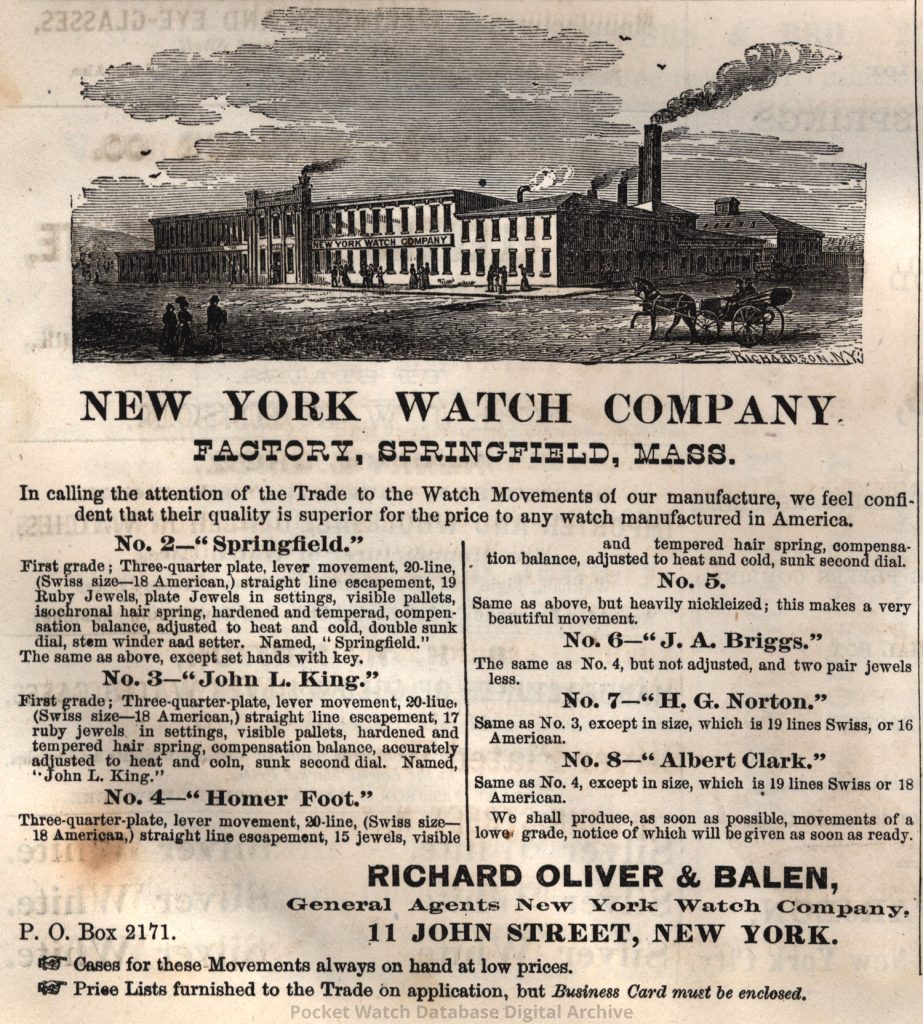
An advertisement published by general agents Richard Oliver & Balen in the December 1869 issue of The Watchmaker and Jeweler provides a glimpse of the product line:
No. 2 “Springfield”
20 Ligne, 19 Jewels, Adjusted to Temperature
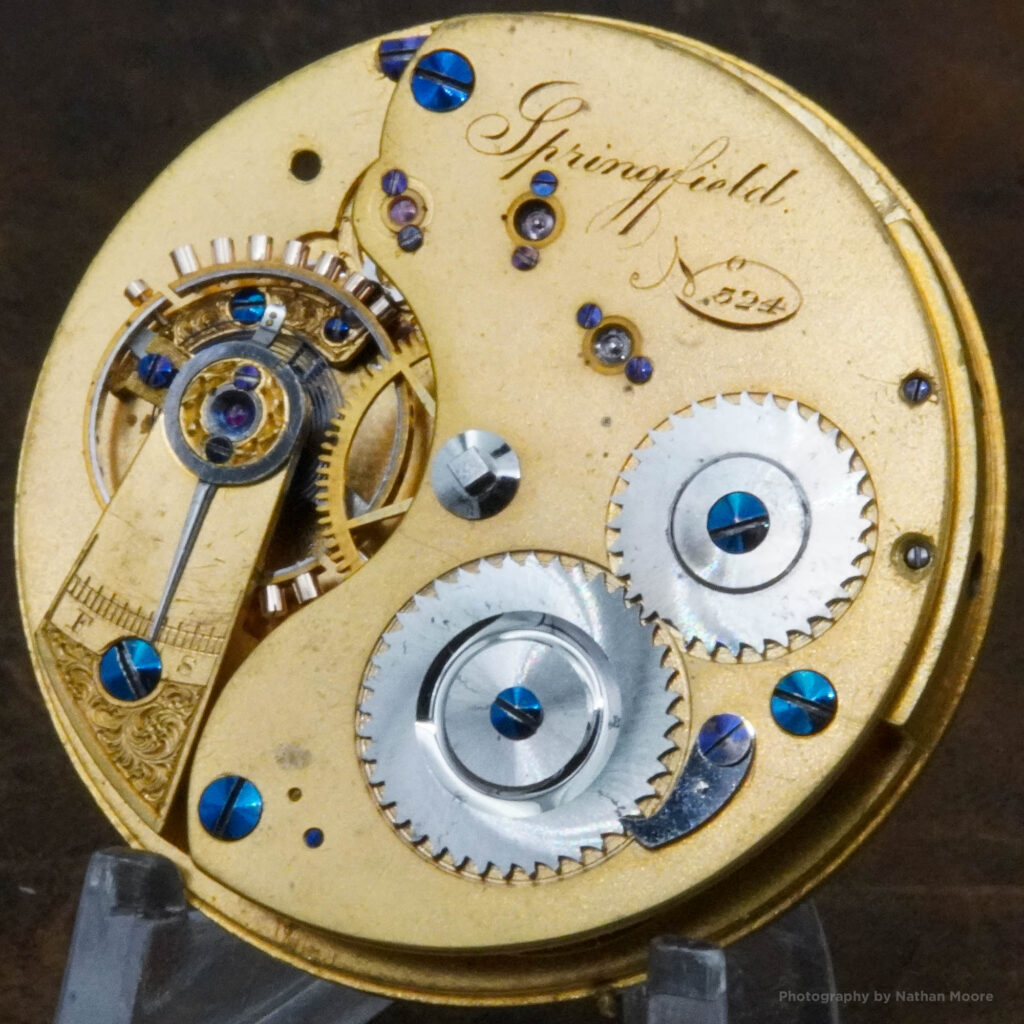
No. 3 “John L. King”
20 Ligne, 17 Jewels, Adjusted to Temperature

No. 4 “Homer Foot”
20 Ligne, 15 Jewels, Adjusted to Temperature
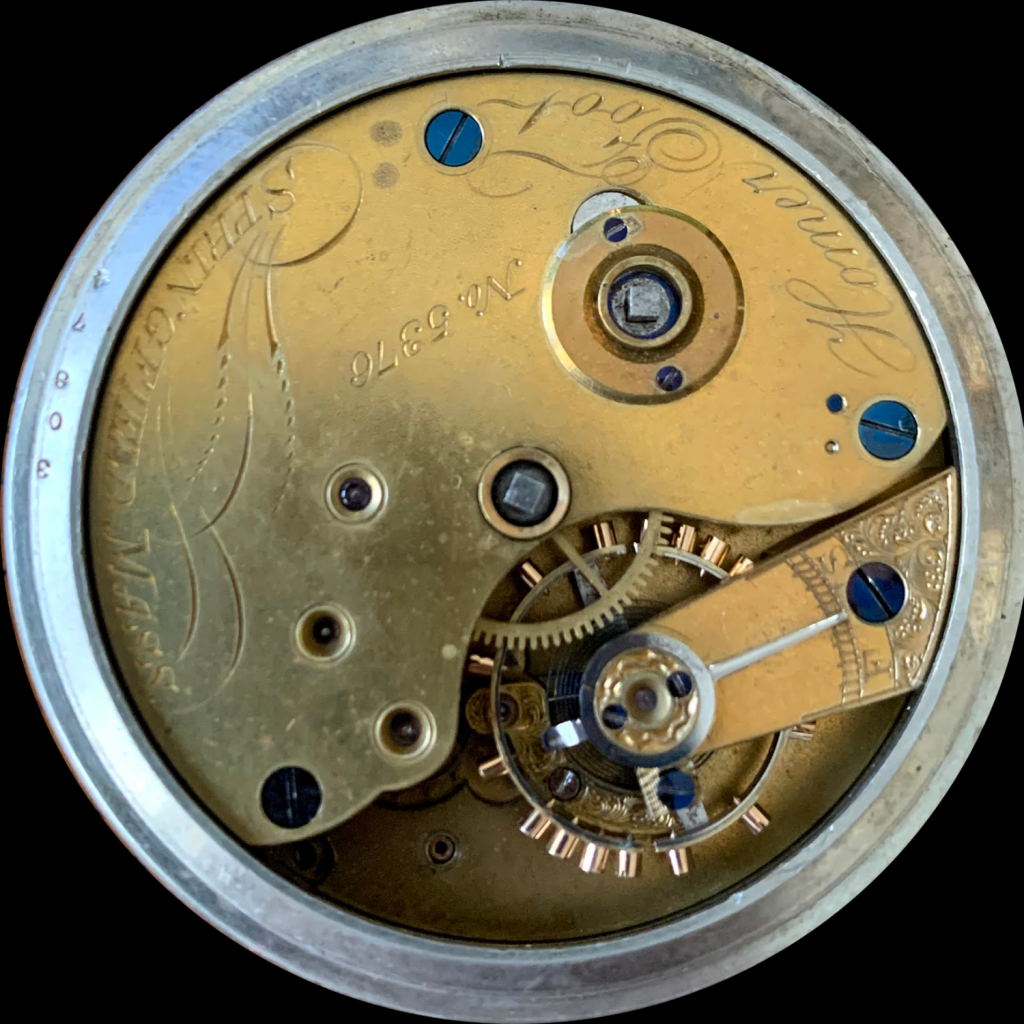
Contributed by BayouLoader
No. 5
20 Ligne, 15 Jewels, Adjusted to Temperature, “Heavily Nickelized”
[No known surviving examples]
No. 6 “J.A. Briggs”
20 Ligne, 11 Jewels
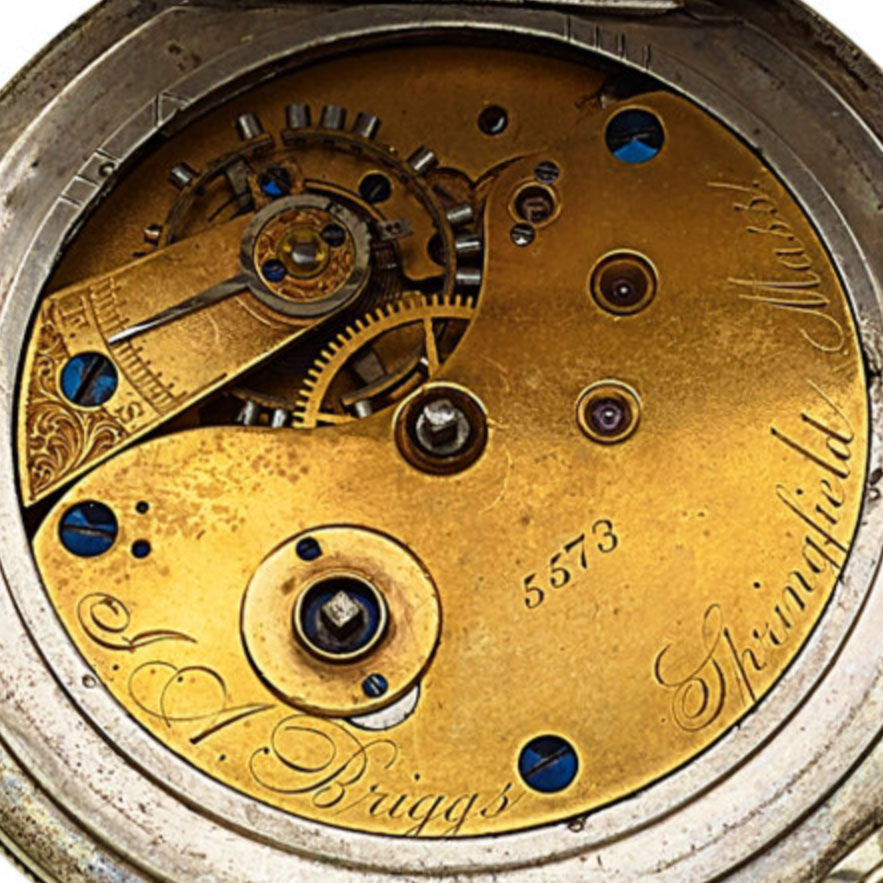
Courtesy of Heritage Auctions
No. 7 “H.G. Norton”
19 Ligne, 17 Jewels, Adjusted to Temperature
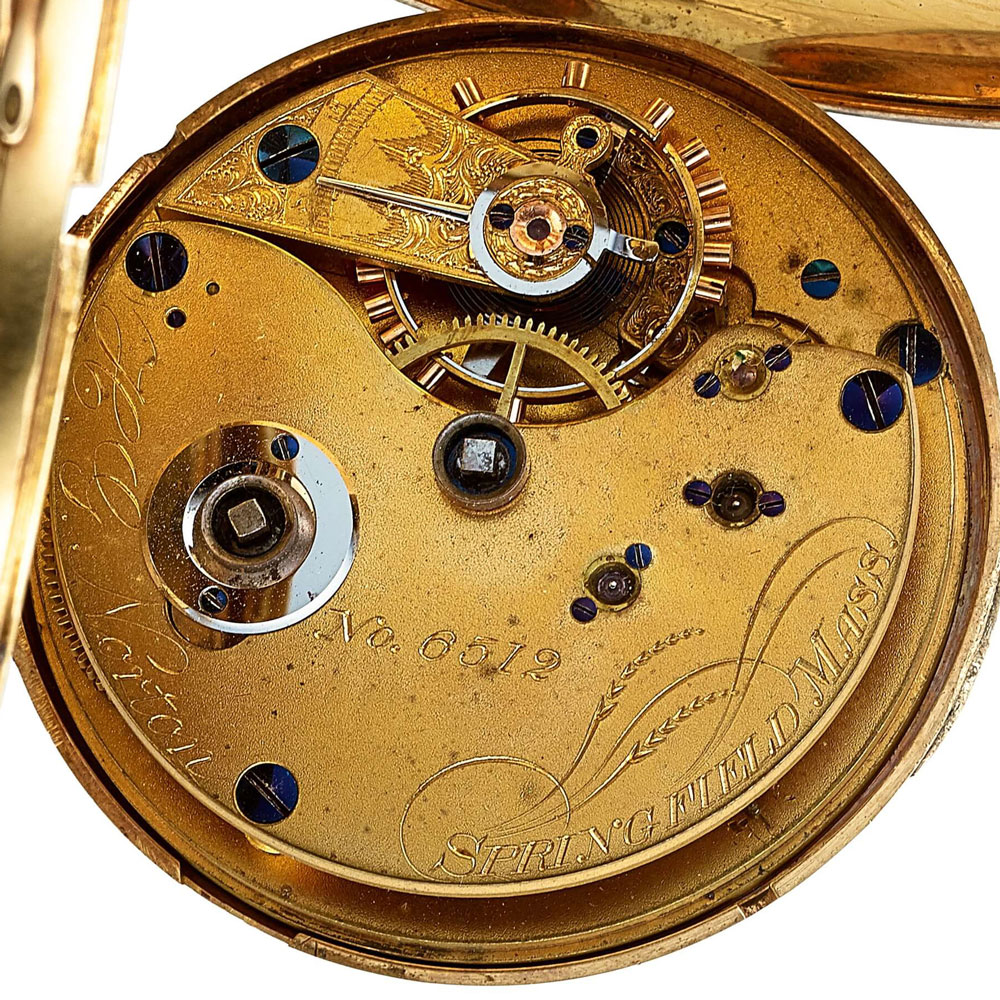
Courtesy of Heritage Auctions
No. 8 “Albert Clark”
19 Ligne, 15 Jewels, Adjusted to Temperature
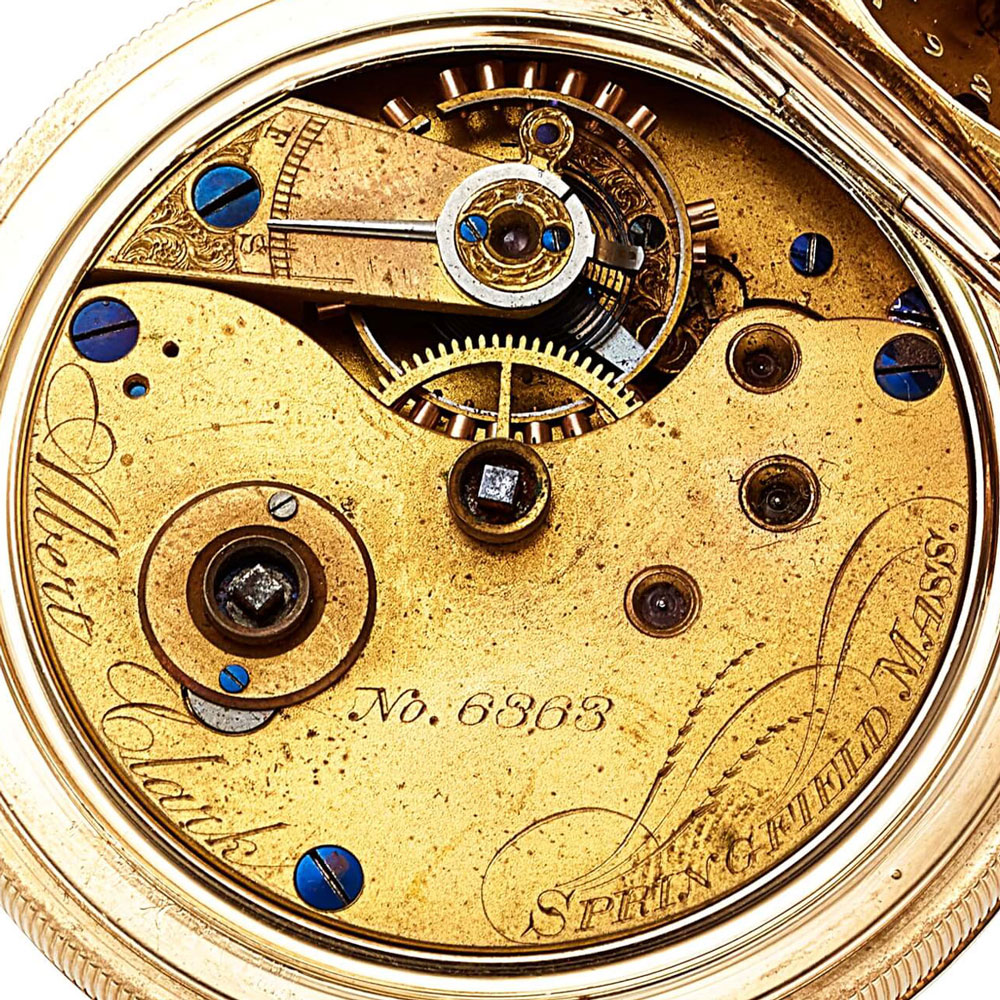
Courtesy of Heritage Auctions
Interestingly, during this era, the company primarily utilized the Swiss “Ligne” sizing system rather than the American system.
The No. 2 “Springfield” still offered during this time demonstrates that the company was selling existing inventory or was still manufacturing the original “Springfield Watch.”
The remaining watches represent the new product line, headed by the 17-Jewel “John L. King” and “H.G. Norton” grades.
The next advertisement published by Richard Oliver & Balen appeared in the March 1870 issue of The Watchmaker and Jeweler. However, the descriptions of individual grades were omitted. Rather, the company relied on a simplified promotion for the “Superior Movements” of the New York Watch Company.

The next month, an advertisement was published in The Watchmaker and Jeweler by J.T. Scott & Co. with an illustrated cut of a 3/4-plate movement marked “New York Watch Co. – Springfield, Mass.” While no grade description was included, it is possible this cut represented the “No. 5” movement mentioned in the earlier grade list published by Richard Oliver & Balen.

As the company diligently prepared to introduce a new 18-Size model, these seven grades were the products offered by the company when the tragic fire broke out at the factory on April 27, 1870.



